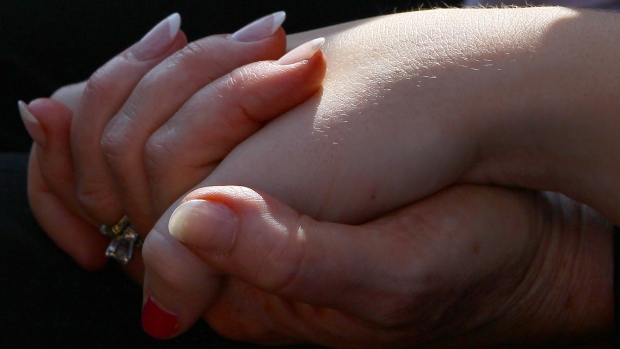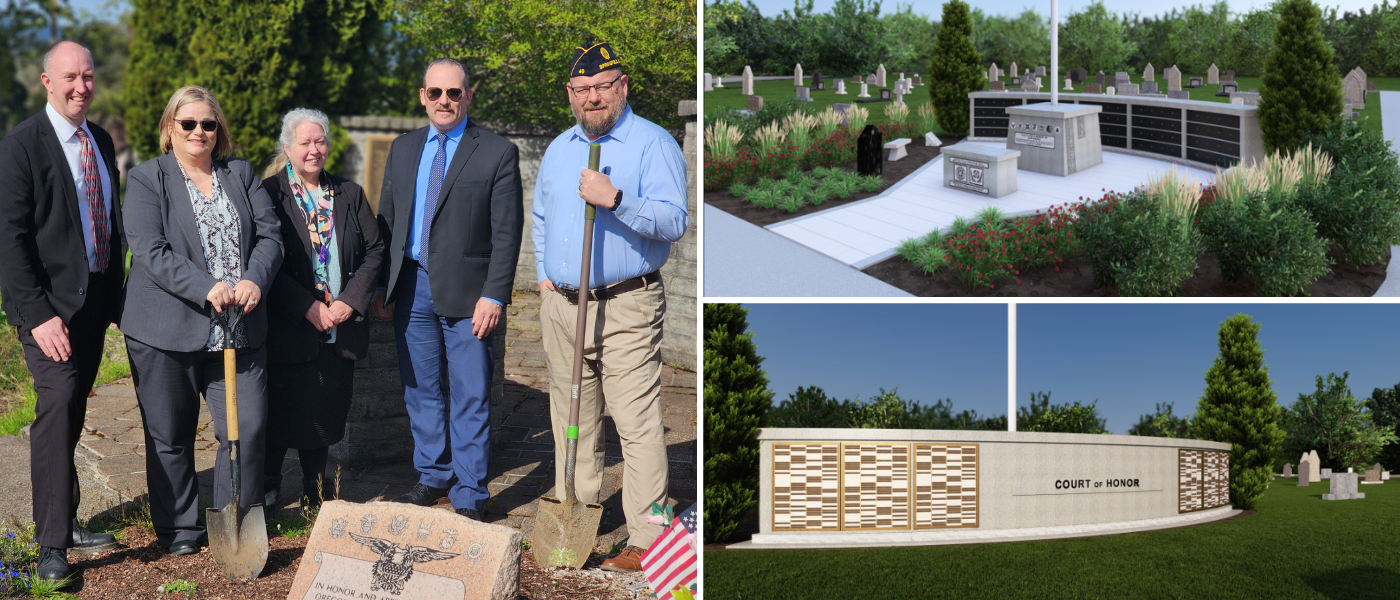Death midwives help families cope with end-of-life care
Gloria Christianson remembers vividly the moment her son Scott passed away.
“Somebody came out and called me back into the room and said, ‘It’s time.’ I sat down, they passed him into my arms and he took his last breath and he died,” said Christianson.
Scott was blind, had a hearing impairment and other disabilities.
“Medicalizing him was the story of his life,” said Christianson, adding that emergency care could be very confusing and upsetting for him. “He’d had enough of that during his fragile life.”
Despite his complex needs, as Scott’s death grew imminent, many of the fears Christianson felt were universal. She worried that he would be alone, or that he would be interfered with by a medical crisis. She worried that people would restart his heart or try to resuscitate him.
To help navigate all this Christianson turned to Judith McGill who became the family’s death midwife. She helped them develop a plan around Scott’s death, and aided them in confronting tough questions along the way.
“Where I began was helping Gloria think, ‘What is this nightmare about his death?'” said McGill. “So we worked through the fears and then transformed that into what would be the most honouring, the most beautiful picture at the very end of his life. Who would be there, what would it look like.”
Death midwifery is a new practice here in Canada. A death midwife (or death doula as they’re sometimes called) can help create death plans, some provide spiritual care, psychological and social support, and sometimes even physical care. They can help plan home vigils and home funerals, and offer guidance with respect to what your rights and responsibilities are in caring for someone who’s died.
 An elderly man looks at the names of the graves of Canadian soldiers after a ceremony at the Canadian War Memorial on October 27, 2014 in Bergen op Zoom, The Netherlands. (Photo by Michel Porro/Getty Images) (Getty Images)
An elderly man looks at the names of the graves of Canadian soldiers after a ceremony at the Canadian War Memorial on October 27, 2014 in Bergen op Zoom, The Netherlands. (Photo by Michel Porro/Getty Images) (Getty Images)In describing death midwifery as she sees it, McGill said, “I think the practice is to walk alongside the individual and their family as they experience, make sense of, and make meaning at death. So that they feel stronger at the passing than they may have felt even prior to the death.”
The practice is still evolving. Some death midwives are nurses or grief counselors or chaplains. Some have graduate degrees in divinity studies. Others worked for years in the funeral industry. There isn’t a college of death midwifery but some attended theContemplative End of Life Care program at the Institute of Traditional Medicine in Toronto, or other courses that are offered in the US.
For Scott’s passing, the plan McGill helped create ensured that he would have loved ones around him, and included keeping him home until the funeral ceremony. They also had a group of Gloria’s closest friends wash and dress Scott’s body while McGill guided the process.
“I began chanting and people just spontaneously were singing Amazing Grace. Some of the women said the Hail Mary,” said McGill.
“I think the practice is to walk alongside the individual and their family as they experience, make sense of, and make meaning at death. So that they feel stronger at the passing than they may have felt even prior to the death.”– Judith McGill, death midwife
Christianson remembers how healing the ritual was for those present. “There weren’t any women in that group who hadn’t experienced the loss of a loved one. Everybody felt that they had an opportunity to reconnect with caring for their own loved one.”
Scott’s father had been away when Scott died. And when he returned, he heard the story of the cleansing. He asked Judith if there was a way he could participate too.
“Peter had had to do that for his fragile disabled child from the time he was born, and did it for him when he was a young man every day,” Christianson explained. “And he got to do it one more time with a tremendous amount of gentleness and compassion.”
 Items are displayed at a small memorial near the spot where Walter Scott was shot in North Charleston, South Carolina April 9, 2015. (REUTERS)
Items are displayed at a small memorial near the spot where Walter Scott was shot in North Charleston, South Carolina April 9, 2015. (REUTERS)“The house was filled with flowers,” Christianson recalls. When it was time to move Scott’s body into the casket they began filling his casket with flowers, a custom McGill had observed as part of Hindu funerals. The flowers were also reminiscent of Scott’s weekly trips to the Hamilton market to buy flowers for his mother.
Like many death midwives in Canada, McGill worked on a volunteer basis, but some charge for their services and their fees can range from about $100 an hour to $5,000 for a set of days. Some practitioners, like Cape Breton’s Cassandra Yonder, struggle with where death midwifery could be headed.
“I don’t wish for a capital ‘P’ professionalization of the practice. Partly because I think that what’s really needed is the grassroots movement, the people in our lives and in our families, and in our communities who are willing to do this work. They already have this innate wisdom,” said Yonder.
Yonder pointed to the baby boomers as the reason why interest in the practice is growing. “We know that the baby boomers are a very strong and compelling consumer group who demand choice. When they were going through having babies, we saw vast leaps and bounds in terms of improvements around the birth midwifery movement. So I think this is maybe a second wave of that.”
Things can get messy when someone in your family is dying, and not everyone will agree to take the same path. There are considerations like religious rituals that dictate what is supposed to happen to a body right after death. McGill says her role is to guide, not choose a course of action.
“I began chanting and people just spontaneously were singing Amazing Grace. Some of the women said the Hail Mary”- Gloria Christianson was helped by a death midwife during her son’s death
The practice of death midwifery is unlicensed and unregulated in Canada, but that isn’t the case everywhere. In 2009, Oregon Senator Vicki Walker introduced a bill to regulate the practice of ‘death care consultants,’ otherwise known as death doulas and death midwives. The bill was passed in July of that year and someone now wanting to call themselves a death midwife in Oregon is required to obtain a license through the state’s Mortuary and Cemetery board.
“Part of the death midwife’s role is to help the family clarify their values and beliefs rather than imposing them,” McGill explained. “There are conversations that become difficult that we assist with…when it comes to finance, inheritance, executors, there’s very little that we would have any advice on. It may be helping the family clarify what questions need to go to their lawyer or doctors.”
“They pass an examination that covers Oregon and federal laws, and rules relating to the care, preparation, disposition, and transportation of dead human bodies,” Walker said.
The former state senator said her concerns were rooted in protecting Oregonians during a vulnerable time. “I wanted full disclosure about what people were getting into. It is a very difficult time for families when someone dies or is working on dying – let’s put it that way. And you’re very prone to being taken advantage of.”
There hadn’t been any particular instance with a death midwife in Oregon that she was responding to, but there had been troubling instances in the state’s history as the death care industry evolved, and aspects of it were unregulated. She wanted to be proactive.
“When I read about this new industry, so to speak – death doulas, death midwives, green burials – I wanted to make sure that Oregon was in front of that.”
She said that the kind of services McGill provided for Scott’s family would be illegal in Oregon without a proper license.
But for Christianson, the fact that McGill didn’t have any formal certification wasn’t an issue. “I don’t know how you legislate and limit the participation of compassionate community members in sharing something that’s a natural life passage.”
“The Canadian Community for Death Midwifery came together out of that urgent question of ‘how will this profession evolve?'” McGill said. “And because the training and development of death midwives are so vastly different, what we’ve decided is the most effective process is developing provincial communities of practice where all those involved in the practice come, share, and organize their training needs. So, no, the need for a standard of practice and standard training is, at least at this point in time, we feel, pretty unnecessary.”
[H/T: CBCRadio]




